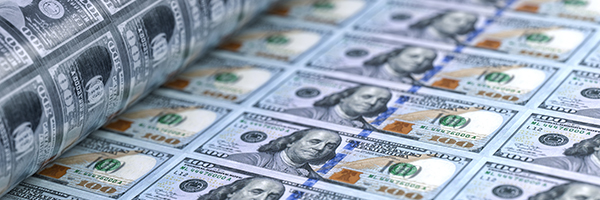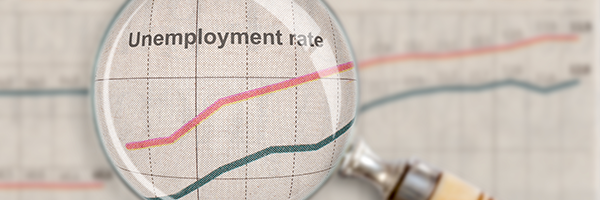 April 20, 2025
April 20, 2025
What You Need to Know Today:
Fed keeps interest rates steady; Powell says no hurry to cut rates
The Federal Open Market Committee voted unanimously today to keep the Federal Funds rate unchanged in a range of 4.25%-4.5%, after lowering rates by a full percentage point in the final months of 2024. Federal Reserve Chair Jerome Powell said officials are not in a rush to lower interest rates, adding the central bank is pausing to see further progress on inflation following a string of rate reductions last year.

So far, the big issue with big tech earnings is valuation
From BIG Tech earnings results so far, what seems clear is that if a company smashes through expectations like Alphabet (GOOG) did, the stock will climb. If, however, you merely match expectations like Meta Platforms (META) and Microsoft (MSFT) then shares retreat.

Lithium Americas closes $2.3 billion DOE loan–stock climbs and then gives it all back
Yesterday, Lithium Americas (LCA) announced that it had closed a $2.26 billion loan from the U.S. Department of Energy’s Loan Programs Office under the Advanced Technology Vehicles Manufacturing Loan Program. The funding is earmarked for the construction of processing facilities at the Thacker Pass lithium project in Humboldt County, Nevada. Thacker Pass is currently North America’s largest known lithium resource. The stock jumped almost 5% yesterday on the news. It fell 8.87% today to $4.11 a share. Lithium Americas is a member of my Millennial Portfolio.

At 2.8%, GDP growth misses estimates but maintains strong trend for the economy
The U.S. economy grew at a 2.8% annualized rate in the third quarter, the Bureau of Economic Analysis reported today. The growth rate was down slightly from 3.0% in the second quarter. Economists had projected 3.1% growth. GDP has now climbed for 10 straight quarters.

No consumer slowdown visible as confidence numbers blast through projections
The Conference Board’s gauge of confidence jumped 9.5 points to 108.7, the highest level since the start of the year, data released Tuesday showed. The median estimate in a Bloomberg survey of economists called for a reading of 99.5. The month to month increase was the biggest since March 2021.

Another bad day for bonds–10-year Treasury yield hits 4.28%
Yields rose and bond prices dropped again today as weak demand in a pair of Treasury note auctions suggested investors are anxious about supply on the eve of the next financing quarter. For the day, the yield on the benchmark 10-year Treasury rose 4 basis points to a yield of 4.28%. The yield on the 10-year Treasury is now up 53 basis points in the last month.

Special Report: Your 10 best moves for the rest of 2023–Part 1, 10 trends for the rest of 2023
In this Special Report I’m going to start by sorting out the data that the market’s moves will likely depend on for the rest of 2023. That’s today’s post, Part 1 of this Special Report. Then I’ll try to handicap the likelihood that the data will zig or zag. And give you a sense of how far away from the current consensus the actual result might fall. And then finally, I’ll give you 10 moves for the rest of 2023 that are the most likely, in my opinion, to result in profits and that won’t wind up costing you big if the data winds up throwing investors a curve.
Live Market Report (20 minute delay)

Please Watch My New YouTube video: The Fed’s Impending Disaster
Today’s topic is The Fed’s Impending Disaster. The CPI inflation numbers for February looked good from an annual perspective–headline at 6% and core at 5.5%–but if you look month to month, inflation ticked up slightly. In the big picture, inflation is lower, but we’re not seeing it fall at the speed the Fed would hope. The Fed wants to get inflation down to 2% and we’re currently around 5.5% core inflation–a long way off. If you look at those numbers alone, you’d expect the Fed to continue raising their rates. This is what the market was expecting just last week, projecting a 25-50 basis point increase for the March 22 meeting. The thing that puts the Fed between a rock and hard place is the Silicon Valley Bank collapse and additional banking stressors that could lead to more disasters inside the Treasury market. In February the FDIC said that insured banks had about $620 billion in undeclared losses. With $23 trillion in the banking system, $620 billion is less than 10% overall, but if it’s concentrated in certain areas, it could cause more blow-ups. We don’t know if we’ll see any big Wall Street banks go down, like Lehman Brothers back in 2008, but I am watching Credit Suisse closely, especially after the big hit to its share price this morning, March 15. Essentially, the rapid hikes in interest rates have put strains on the banking industry and the Fed will have to decide whether they will continue raising rates to fight inflation, or stop in favor of supporting banks while inflation is still high at 5.5%.

Now it’s Credit Suisse–the banking crisis goes international
Shares of Credit Suisse (CS) fell this morning–if a 31% drop at the worst moment can be called “falling”–after the bank’s biggest shareholder said it would NOT put more money into the challenged bank. As of noon New York time, shares of Credit Suisse were down 24.1%. The bank’s bonds fell to levels that signal deep financial distress, with securities due in 2026 dropping 17.75 cents to 70 cents on the dollar in New York. That puts their yield at about 20 percentage points above U.S. Treasuries.

Sure smaller regional banks are most at risk from big unrealized bond losses, but the biggest losses are at much bigger banks–like Bank of America
Yesterday, March 14, Moody’s Investors Service placed First Republic Bank (FRC) and five other US lenders on review for downgrade because of worries over uninsured deposit funding and unrealized losses in their asset portfolios. (the other banks include Western Alliance Bancorp (WAL), Intrust Financial, UMB Financial (UMBF)., Zions Bancorp (ZION), and Comerica (CMA).) But these smaller banks aren’t the companies in the sector sitting on the biggest bond portfolios with unrealized losses.

Where’s the contagion? Signature Bank’s shutdown was due to its crypto exposure but the biggest negative effects will be in the commercial real estate market
One of the lessons of the subprime mortgage crisis is that it’s hard to predict exactly how problems will ripple out from bad bets on one asset class to a crisis in a seemingly unrelated part of the financial market. That’s one reason that the current set of bank collapses–Silvergate Capital, Silicon Valley Bank, and New York’s Signature Bank–is so unsettling. We know–we think–how these institutions got into trouble. But we don’t know what other banks or sectors of the financial markets might be dragged into the problem.

CPI inflation numbers put Fed between a rock and a hard place next week
February core inflation, measured by the Consumer Price Index, climbed from January at a faster month-to-month pace, according to this morning’s report from the Bureau of Labor Statistics. Core inflation, which excludes theoretically more volatile food and energy prices, rose at a 0.50% month-to-month rate in the month after climbing at a 0.40% month-to-month rate in January. That put core inflation on a 5.5% annual pace. This wasn’t what the Federal Reserve needed to hear as it wrestles with the problem of what to do to contain inflation still running at well above the central bank’s 2% target (and which threatens to edge higher again) at a time when the banking system is showing systemic stress brought on by the Fed’s aggressive interest rate increases. Here are the Fed’s choices.

The consensus on peak interest rates goes forward into the past
Remember the financial market consensus that the Federal Reserve would raise interest rates by 50 basis points at its March 22 meeting and that we should expect to see peak short-term rates from the Fed above 5.5% and maybe even as high as 6%. Not any more. The collapse of Silicon Valley Bank and the exposure of exactly how fragile the banking system is has led to a return of the earlier (as in a month or two ago) consensus.

Please Watch My New YouTube Video: Voter Suppression…in China
This week’s Trend of the Week is Voter Suppression…in China. During the most recent National People’s Congress in China, two people were notably not invited–entrepreneurs Tony and Pony Ma, the heads of Alibaba and Tencent. Other entrepreneurs were also notable for their absence. Xi Jinping has made it clear that entrepreneurs have a much smaller role in his economy going forward, as he looks to consolidate power in the hands of the Chinese Communist Party and prevent any potential competition from power centers. Xi’s new policies, coming out of the National People’s Congress, focus on spending by state-run businesses and emphasize consumer spending, as opposed to infrastructure, as a source of economic stimulus. So how should you invest in China? Despite Pony Ma’s absence at the People’s Congress, Tencent Holdings (OTCMKTS: TCEHY) remains at the forefront of Chinese innovation and technology. It’s clear that China will not adopt US-made chatbots and will develop its own. Tencent looks likely to take a leading role in that effort. The company is also the dominant game producer in the world and gets a lot of its revenue from outside of China. It’s the China stock I’d look at for the long term. In the short term, I’d look at JD.com, which is well-suited to get a bounce from the emphasis on consumer spending. The current price is a good entry point. I’ll be adding it to my JubakPicks.com portfolio tomorrow.

Don’t forget tomorrow’s CPI inflation report for February
Tomorrow’s CPI inflation report for February will show whether the Federal Reserve faces a very difficult task in bringing down inflation without crashing the economy (and/or the banking system) or whether the job is simply impossible. Right now economists are pointing toward impossible. The annual inflation rate is likely to have come down in February from January but the month-to-month trend is likely to be flat. Which means that inflation has stopped declining with the annual rate well above the Fed’s 2% target rate.

Is today (or maybe tomorrow?) the moment of maximum short-term fear? I’m selling one of my Call Options on the VIX fear index today
Back on March 6, I bought Call Options on the CBEO S&P 500 Volatility Index (VIX) at a strike of 23 for the May 17 and June 21 expirations. My logic was that at 18 or so, the VIX was trading at a level that basically ignored all of the potential negative news and trends visible in the financial market for the next couple of weeks. I certainly didn’t count on the collapse of Silicon Valley Bank or the wave of fear that has today overwhelmed shares of every regional and fintech bank. I think the odds are that the crisis won’t go away, but that the extreme fear of today will turn into something less extreme over the next day or so. Fear tends to work like that in the financial markets: When investors and traders discover the sky has fallen today, they get more optimistic (not always reasonably) about tomorrow. So I’m selling the May 17 Call Option on the VIX that I bought on March 6. The purchase price that day was $$94 per contract. The price today closed at $420 per contract. That’s a gain of 116%.

What does the collapse of Silicon Valley Bank mean for your portfolio?
The collapse of Silicon Valley Bank means both a whole lot for your portfolio and very little. It depends. I’ll explain.

Saturday Night Quarterback (on a Sunday) says, For the week ahead expect…
Truthfully no one knows what’s going to happen as a result of the collapse of Silicon Valley Bank. Expect a lot of volatility, though, as the “smart money” tries to talk specific scenarios (watch out for shorts bearing expert commentary) and as the most likely scenario shifts from hour to hour.

Mixed news from February jobs report–jobs up more than expected, wage growth slows
The U.S. economy added 311,000 jobs in February, the Bureau of Labor Statistics reported on Friday, March 10. That was an expected drop from the January blowout of 504,000 new jobs. But it was significantly above the 225,000 jobs expected by economists surveyed by Bloomberg.

12 More Stocks to Sell Ahead of 10-days of Market Moving News (for Step 1 of my Special Report: 5 Steps for the Next 5 Months)
Back on February 16, I gave you a list of 12 stocks I’d sell into the rally after the February 1 meeting of the Federal Reserve. (Here’s the link https://jubakam.com/wednesdays-rally…re-the-12-stocks/). Yesterday in the first step of my Special Report: 5 Steps for the Next 5 Months” I promised another set of sell recommendations before Friday’s jobs report for February, the March 14 CPI inflation report, and the March 22 meeting of the Fed’s interest rate setting group, the Open Market Committee. Here’s that list of another 12 stocks to sell.

Please Watch My New YouTube Video: Quick Pick Apple (but not until it drops to $140 or so)
Today’s Quick Pick is Apple (NASDAQ: AAPL). For this Quick Pick, I’m suggesting you wait to buy until Apple falls to around $140 (which I think is coming.) Apple, like many tech stocks, is a seasonal stock, and we’re currently in one of the company’s traditionally weaker quarters. The Christmas buying quarters (the last two quarters of the year) are when Apple brings in the most revenue, and the first two calendar quarters are generally weaker. Apple took a hit during the big downward turn on the bear when all tech stocks were hit, but the stock recovered strongly during this early 2023 rally. If shares get down to $140, that’s a great place to get in before Apple announces new technology and updates to its product line. There are rumblings of an Apple VR headset announcement coming soon and we know that we’ll see new iMacs and Powerbooks. We can also look forward to the Apple Developer Conference in May and new product announcements in September. If you can get this cheap in the first half of the year, you can look for a big recovery in the second half of the year.

Stocks drop on fear of tomorrow’s jobs report even though data today shows labor market weakness
Two reports showing “some” labor market weakness haven’t been enough today to offset worry over tomorrow’s jobs report for February. At the close in New York, the Standard & Poor’s 500 was off by 1.85% and the Dow Jones Industrial Average was lower by 1.61%. Tech stocks led the market downward with the NASDAQ Composite lower by 2.05% and the NASDAQ 100 falling 1.80%. The small-cap Russell 2000 lost 2.81%.

Please Watch My New YouTube Video: How Long Before Climate Change Forces the Fed to Rethink Inflation?
Today’s topic is How Long Before Climate Change Forces the Fed to Rethink Inflation? In Jerome Powell’s most recent report to the House and Senate, he made it clear that interest rates would be raised higher than previous expectations and that 50 basis points weren’t off the table for the March 22 meeting. The CME’s Fed tool, which tracks how the market believes the Fed will move rates, was showing a 50/50 split of 25 and 50 basis points on March 7. The week before that, the odds of a 50 basis point hike were only at 24%. We can see the market is coming around to the idea of maintaining higher interest rate hikes. How does this relate to climate change? Well, another data point is coming out on Friday; the jobs report. The big blow-out in January jobs is directly related to climate change. January had about 200,000 additional jobs created due to the fact that it was warmer than usual for the month. Those actual numbers were seasonally adjusted with past trends of colder Januaries, when jobs had been lost due to the colder weather, leading to very questionable final numbers. The Fed’s division of inflation into an “all prices” number and a core rate is also becoming questionable. The Fed often focuses on the core rate, which leaves out food and energy price increases, but those are two categories that are likely to be central to the way that warming temperatures change the global economy. At some point, the Fed will have to figure out how it will handle those two categories of prices, and how climate change will lead to a new calculation of the neutral interest rate.

Special Report: 5 steps for 5 months–your first three moves for NOW
This is going to take me a while to get all five steps posted. The market situation is very complicated right now and the appropriate solutions are very specific. I’m going to start with the short-term moves you need to be making NOW and then gradually extend my recommendations to cover the entire next five months. I’ve now posted Steps #1, #2, and #3

First Quantum Minerals reaches copper deal in Panama; stock gains 3.86% Wednesday a.m.
First Quantum Minerals (FQVLF) has reached an agreement on a new concession contract with Panama’s government over its huge Cobre Panama copper mine. The agreeent, assuming tht a final signing goes ahead, would end a months-long dispute that has halted ore processing and export shipments. The Cobre Panama mine accounted, before the dispute, for 1.5% of global copper production.

ADP payroll report comes in hot; is that bad news for Friday’s February job report?
Private payrolls increased by 242,000 in February, according to the ADP National Employment Report. Economists surveyed by the Wall Street Journal had been looking for the economy to add 205,000 jobs in the month. The February increase was well above the revised January total of 119,000 new jobs. While the jobs report issued by the Bureau of Labor Statistics doesn’t always track closely to the ADP report, the stronger-than-expected new job total in today’s data certainly suggests that Friday’s official government report could also come in hotter than expected. Right now economists are looking for the economy to add 225,00 jobs in February according to the official data.

Stocks retreat on Fed chair Powell’s “higher and faster” testimony on interest rates
As the day wore on, the stock market decided that it liked Federal Reserve Chair Jerome Powell’s Senate testimony less and less. The Standard & Poor’s 500 was down just 0.72% at 11 a.m. New York time. The index closed down 1.53% for the day.



